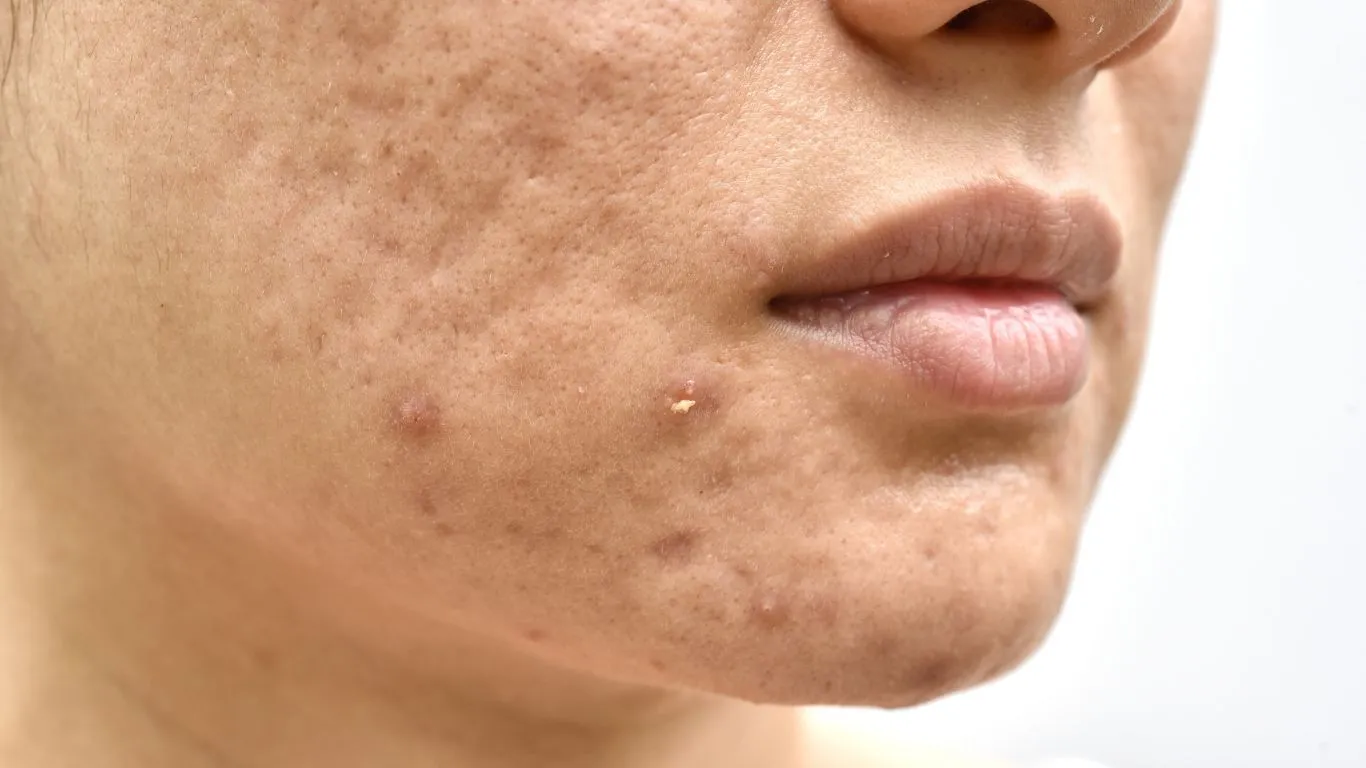Acne is a common skin condition that affects many people at different stages of their lives, especially during adolescence. While acne itself may fade away, it can leave behind scars that impact the skin’s appearance. These scars can vary from dark spots to more pronounced scars, and they may require special treatment to improve the skin’s look. Here, we will discuss the types of acne scars and how to manage them.
Types of Acne Scars
There are several types of acne scars, including:
Atrophic Scars
Atrophic scars appear as low or small indentations in the skin. They occur due to tissue loss caused by inflammatory acne. These scars are less common but can be cosmetically bothersome.
Hypertrophic Scars
In contrast to atrophic scars, hypertrophic scars form when there is an excess production of collagen during the healing process. These scars appear as raised bumps on the skin’s surface.
Read More: Hair Loss and Its Types
Treatment of Acne Scars
It is essential to consult a specialist and avoid attempting to treat acne scars without medical advice, as there are many effective and safe treatments available, including:
Topical Treatments for Acne Scars
Several topical products can be used to diminish the appearance of scars, but it is advisable to consult a doctor to determine the most suitable treatment. Examples include:
Salicylic Acid
Salicylic acid is a natural compound found in skincare and acne treatment products. It helps remove dirt and dead skin cells that clog pores and cause breakouts. It also reduces swelling and redness in the affected areas, which may help lessen the appearance of scars.
This treatment is effective for all types of scars, so it is recommended to include it in the daily skincare routine. Always test products on a small area first to avoid irritation, especially for sensitive skin.
Retinoids
Topical retinoids
Topical retinoids can help reduce acne scars due to their anti-inflammatory properties. They also promote skin cell turnover, helping to remove dead skin and improve skin texture.
Retinoids can lighten hyperpigmented scars, especially in individuals with darker skin. It is important to use sunscreen when going outside, as retinoids may increase skin sensitivity to sunlight.
Alpha Hydroxy Acids (AHAs)
AHAs are mild acids that work to remove the outer layer of skin, revealing new, healthy skin underneath. They help eliminate dead skin cells and prevent clogged pores, contributing to acne treatment and reducing the appearance of scars, aiding the skin in restoring its natural color after pigmentation caused by acne.
Medical Treatments
If previous treatments do not alleviate acne scars, there are several medical options available, including:
Chemical Peels
This is one of the most popular treatments, using a chemical solution to remove dead skin layers, encouraging the growth of new skin with fewer scars.
Results can be maintained by repeating light and medium chemical peels, unlike deep peels, which are generally only recommended once.
Mechanical Exfoliation
This technique employs specialized devices to remove dead cells and renew the skin surface.
Microneedling
This process involves using fine needles to create small wounds, which helps stimulate collagen production and smooth out scars. It is considered safe and effective for reducing acne scars, with minimal risk of discoloration. Results can vary, and multiple sessions may be needed for optimal outcomes.
Laser Skin Resurfacing
This method uses lasers to remove damaged upper layers of skin, stimulating the production of new, healthy collagen.
Dermabrasion
This technique involves using surgical sanding tools to remove the outer skin layer, reducing the appearance of scars.
Corticosteroid Injections
Corticosteroid injections can help improve the appearance of some types of raised scars.
Soft Tissue Fillers
Fillers are injected directly into the scars to enhance the skin’s appearance.
Scar Release (Subcision)
This technique is used to treat severe scars, where a needle is inserted to break up fibrous tissue, helping to reduce skin tethering and improve the scar’s appearance.
References:
- Acne scars: What’s the best treatment? (n.d.). Mayo Clinic. https://www.mayoclinic.org/diseases-conditions/acne/expert-answers/acne-scars/faq-20058101
- (2024, May 1). Cleveland Clinic. https://my.clevelandclinic.org/health/diseases/21222-acne-scars

